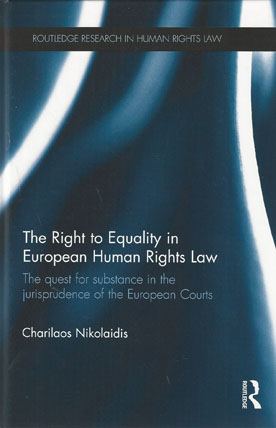
This book explores the concept of a substantive right to equality and considers the underlying rationale behind the right to equality and non-discrimination within the European Convention on Human Rights (ECHR) and the EU.
The book sets out a theoretical basis for the right to substantive equality before undertaking a careful analysis of the jurisprudence of both the European Court of Human Rights and the European Court of Justice in order to examine how the two Courts have approached the question through their case-law.
The historical evolution of the prohibition of discrimination in the two legal orders is traced in order to demonstrate how the human interest safeguarded by a right to equality has developed and continues to develop within the jurisprudence of the Strasbourg and Luxembourg Courts.
The book demonstrates how the right to substantive equality is becoming increasingly relevant. It shows how, despite the profound differences between the scope of ECHR and EU equality law, the two Courts have been willing to move beyond the apparent limitations of the written legal framework in several instances with a view to extending the personal and the material scope of what appears to be an emerging human right to equality.